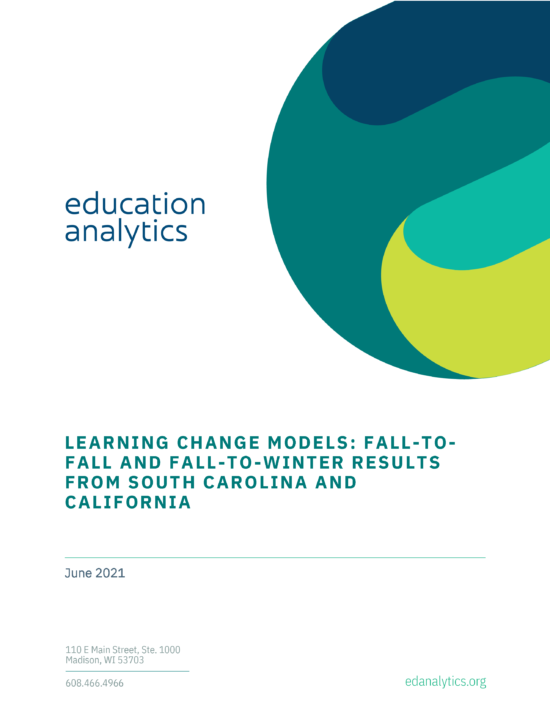Learning Change Models: Fall-to-fall and Fall-to-winter Results from South Carolina and California
As the one-year anniversary of school closures due to COVID has come and gone, efforts to unpack the effects of COVID on student outcomes continue. Several important reports have estimated the impact of school closures last year on students’ learning as the 2020-21 school year began (e.g., Curriculum Associates, 2020; Dorn, Hancock, Sarakatsannis, & Viruleg, 2020; Kogan & Lavertu, 2021; Kuhfeld, Tarasawa, Johnson, Ruzek, & Lewis, 2020; Renaissance Learning, 2020), and new reports are beginning to emerge to assess the ongoing impact of COVID throughout the 2020-21 school year (e.g., Curriculum Associates, 2021; Renaissance Learning, 2021). Given the absence of statewide summative assessments in spring 2020, we leverage historic and current-year data from three interim assessments—NWEA MAP, Renaissance Star, and Curriculum Associates iReady—to examine how student learning last year and this year have differed from student learning before COVID in two states, which we refer to as learning change.
This report describes the technical details of our approach to estimating learning change in 54 local education agencies (LEAs) in the state of South Carolina, and 19 LEAs in the state of California. We focus both on the degree to which these students experienced slower academic growth compared to previous school years (i.e., learning lag) by the time they returned to school this fall, and whether they are experiencing learning lag as of the current winter—for which we have the most up to date interim assessment data. To do this, we estimate fall-to-fall (12 month) growth models and fall-to-winter (15 month) growth models to understand how students’ growth last year and this year compares to growth over the same time period in the past. To understand equity gaps in the degree to which students have experienced lost instructional opportunities, we disaggregate these results for the students who are economically disadvantaged, students who are English learners, students with disabilities, students of different racial/ethnic backgrounds, students with low prior achievement, and students who are homeless.
